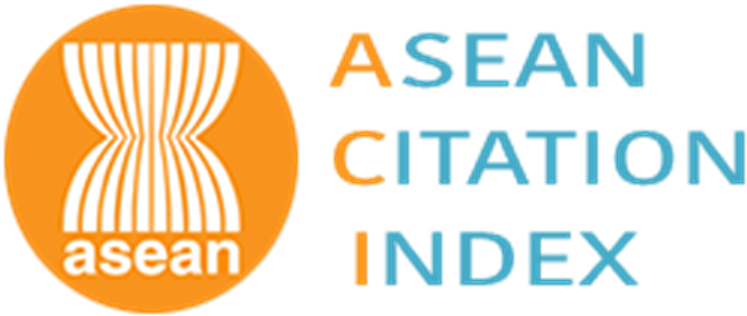การจัดเส้นทางเดินรถขนส่งในการอพยพเมื่อเกิดอุทกภัย โดยการพิจารณาประเภทของผู้ประสบภัย
Abstract
จากภาวะนํ้าท่วมใหญ่ของประเทศไทยในช่วงปลายปี พ.ศ. 2554 ผู้ประสบอุทกภัยจำนวนมากประสบปัญหาในการอพยพออกจากพื้นที่เสี่ยงภัยไปยังสถานที่ปลอดภัยทั้งนี้เนื่องจากระดับนํ้าที่ท่วมสูง การอพยพจำเป็นต้องใช้ยานพาหนะที่มีความสูงพิเศษเท่านั้น จากปัญหาดังกล่าวนี้ผู้วิจัยได้ทำการศึกษาปัญหาการจัดเส้นทางเดินรถขนส่งในเคลื่อนย้ายอพยพประชาชนเมื่อเกิดอุทกภัย มีวัตถุประสงค์เพื่อค้นหาเส้นทางเดินรถขนส่งผู้ประสบภัยระหว่างเกิดอุทกภัย ที่สามารถเคลื่อนย้ายผู้ประสบภัยออกจากพื้นที่เสี่ยงภัยโดยใช้ระยะเวลารวมในการอพยพสั้นที่สุด ทำการแก้ปัญหาโดยใช้การสร้างแบบจำลองปัญหาทางคณิตศาสตร์ (Mathematical Model) ซึ่งพัฒนามาจากแบบจำลองพื้นฐานของรูปแบบปัญหาการจัดเส้นทางสำหรับยานพาหนะ (Vehicle Routing Problem: VRP) แบบจำลองที่สร้างขึ้นมีการพิจารณาประเภทของผู้อพยพออกเป็น 2 ประเภท ได้แก่ ผู้อพยพปกติ และผู้อพยพที่ต้องการการช่วยเหลือพิเศษ ทำการทดสอบแบบจำลองโดยใช้แก้ปัญหากับพื้นที่กรณีศึกษา ตำบลลาดสวาย อำเภอลำลูกกา จังหวัดปทุมธานีโดยแบ่งการทดลองออกเป็น 10 กรณี โดยกำหนดสัดส่วนของจำนวนประชากรในแต่ละหมู่บ้านที่คิดจะอพยพร้อยละ 10, 20 และ 30 และกำหนดระดับการท่วม 3 ระดับ ได้แก่ 0.5, 1.5 และ 2.5 เมตร และกรณีที่ 10 เป็นกรณีที่มีการจัดเส้นทางอพยพคล้ายกับที่ใช้ในการเกิดอุทกภัยปี 2554 ผลลัพธ์ที่แสดงออกมาสามารถระบุ ระยะเวลาอพยพรวมที่สั้นที่สุด (แปรผันตามระยะทางและเวลาขึ้นลงรถ) จำนวนยานพาหนะที่ต้องการ และเส้นทางที่ยานพาหนะแต่ละคันวิ่งรับส่งผู้อพยพ ซึ่งสามารถนำไปเป็นแนวทางในการวางแผนการจัดการขนส่งเมื่อเกิดอุทกภัยครั้งต่อไปได้
From the flood situation in Thailand, 2554, a large number of victims had a trouble in evacuating from affected areas to save places. Due to the height of flood level, only special high vehicle can be used for evacuation during flood. Based on this problem, we want to solve the problem of vehicle routing for evacuation during flood situation. The objective is to determine the vehicle routes, for moving victims from affected areas to safe places during flood disaster, with the shortest total evacuation time. We solved the problem by constructing a Mathematical Model, which was developed based on the Vehicle Routing Problem (VRP). The proposed model considered two types of victims, which are regular victims and special help needed victims. We tested the proposed model with a case study area in Ladsawai Sub district, Lumlukka District, Pathumthani Province. The experiments were divided into 10 cases, by fixing the proportion of victims in each village wanted to evacuate at 10%, 20% and 30%, and by considering 3 flood levels at 0.5, 1.5 and 2.5 meters. The last case, case 10, was the vehicle routing similar to the one used during flood in 2014. The output of the model showed the shortest total evacuation times (depended on travelled distance and loading time), the number of vehicles needed, and the routes that each vehicle took to evacuate the victims. This result can be used as a guideline for the vehicle route management planning when the next flood occurs.
Keywords
ISSN: 2985-2145





